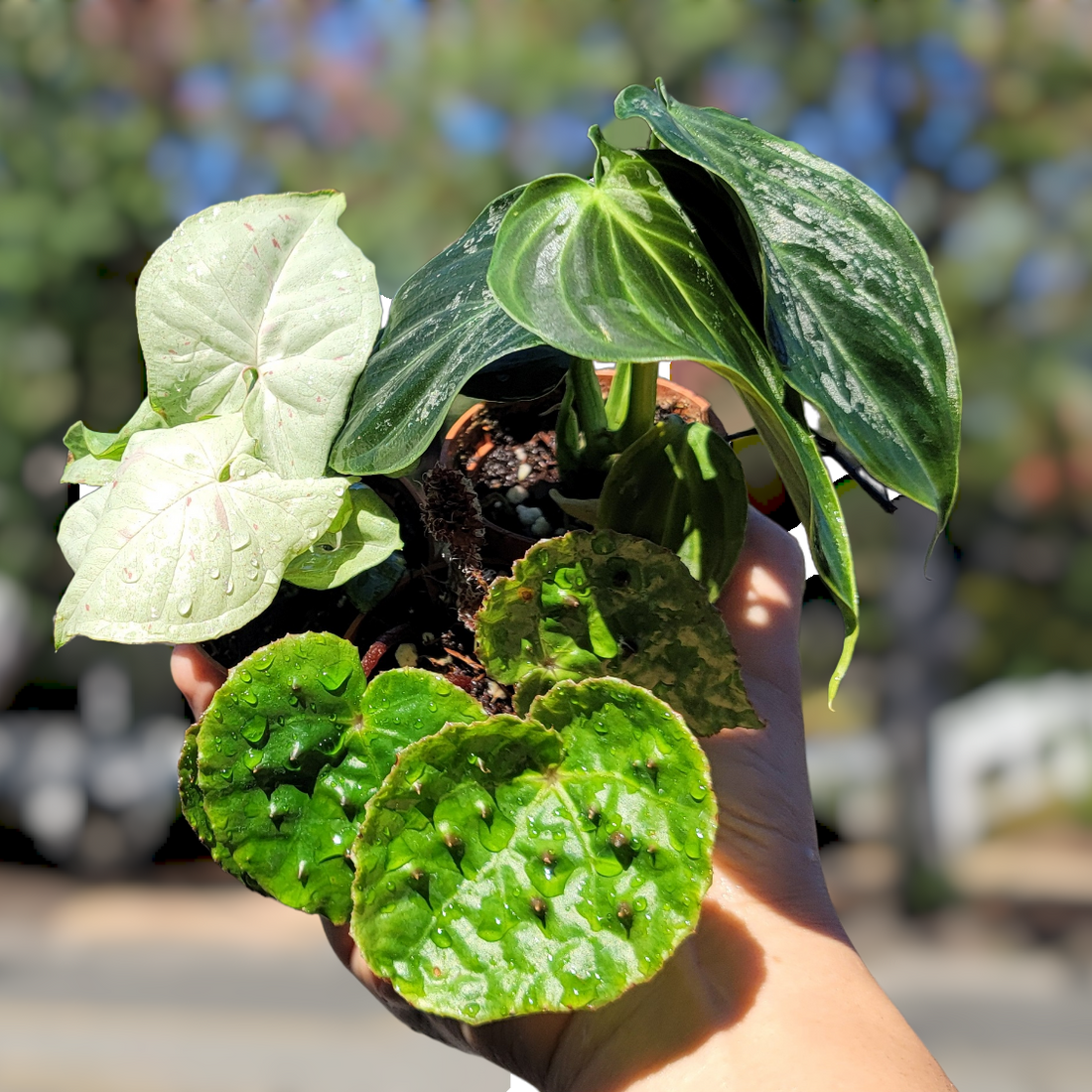
Time to bring houseplants back in
Share
If you had your plants outside this summer, it's time to bring them in. Here in the PNW, Summer instantly turned into Fall overnight with temperature dropping and the return of cold rain. Bringing houseplants back indoors is an important step to ensure they thrive during the colder months. When to bring them inside and what to do depends on your local climate and the specific needs of your plants, but here's a general guideline and checklist to help you:
When to Bring Houseplants Back Indoors:
-
Temperature: Start thinking about bringing plants indoors when nighttime temperatures consistently drop below 50°F (10°C). Tropical plants are more sensitive to cold and should be brought in earlier, typically when temperatures are consistently below 60°F (15°C).
-
Daylight: Consider the diminishing daylight hours. As days get shorter, plants receive less light, which can affect their growth. Bringing them inside before this becomes a significant issue is wise.
-
Frost Warning: Keep an eye on weather forecasts for any frost warnings in your area. Frost can damage or kill many outdoor plants.
Checklist for Bringing Houseplants Indoors:
-
Inspect for Pests: Before bringing your plants inside, inspect them for any pests or signs of infestations like spider mites, aphids, or mealybugs. If you find any, isolate the affected plant and treat it before bringing it indoors. Want to go organic , check out Circadian Sunrise or incorporate Beneficial Mites.
-
Prune and Trim: Trim back any leggy growth and dead or yellowing leaves to encourage healthy growth during the winter. Here's our favorite pruner we use in store. Sharp, sturdy and made to last. Propagate your cuttings to start new plants for plant swaps and just for the fun of it. We've been obsessed with mushrooms and these Mushroom plant vessels are ideal for your cuttings.
-
Repot if Necessary: If your plant has outgrown its pot or the soil is depleted, consider repotting it with fresh potting mix. Make sure the pot has drainage holes. Use a soil blend with active probiotics and beneficials to keep roots healthy. Our go to is Mother Potting Soil.
-
Check for Disease: Look for signs of disease, like mold or fungus, and address any issues before bringing plants indoors. Circadian Sunrise is a 3 in 1 (miticide, insectide, and fungicide).
-
Clean the Plant: Gently wipe the leaves with a damp cloth to remove dust and pests.
-
Acclimate to Indoor Conditions: Before moving your plants inside, place them in a shaded or partially shaded outdoor area for a few days to acclimate them to lower light levels. This reduces the shock of moving from outdoor to indoor conditions.
-
Choose the Right Location: Find a suitable indoor location for each plant based on its light requirements. Some plants prefer bright, indirect light, while others can tolerate lower light levels.
-
Check Humidity: Indoor heating can dry the air, so consider using a humidity tray, a humidifier, or misting your plants occasionally to maintain proper humidity levels.
-
Reduce Watering: Adjust your watering schedule since indoor plants typically require less water during the winter months. Water only when the top inch or two of the soil feels dry.
-
Fertilize Sparingly: Reduce fertilization during the winter. Most plants go through a period of dormancy and don't need as many nutrients.
-
Monitor for Pests and Disease: Keep a close eye on your indoor plants for any signs of pests or disease, as indoor conditions can sometimes exacerbate these issues.
-
Provide Adequate Light: If your indoor space doesn't receive enough natural light, consider using grow lights to supplement the available light. Need an extra boost of light, we got you with these HIRO spot light.
By following this checklist and paying attention to your specific plant's needs, you can ensure a smooth transition for your houseplants from the outdoors to the indoors, helping them thrive throughout the winter months.
